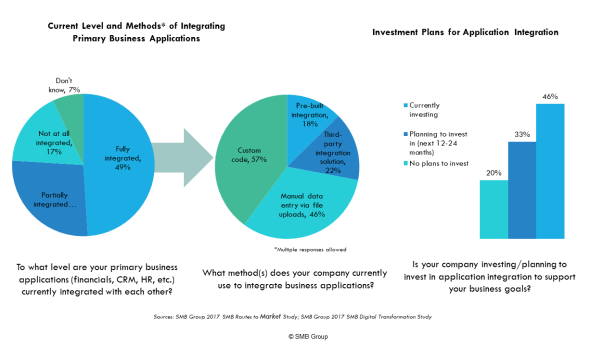Salesforce.com has acquired more than 50 companies since its founding in 1999. Earlier this week, it made its biggest purchase ever, acquiring MuleSoft for $6.5 billion.
Salesforce will use MuleSoft’s Anypoint platform—which connects applications, data and devices (cloud and on-premises)—as fuel for its new Salesforce Integration Cloud. With these new capabilities, Salesforce will be able to provide its customers with a more complete view of their customers and prospects. Armed with more complete information, they can better personalize the experience they provide to their own customers.
Investors noted that the deal represents a 36% premium to MuleSoft’s March 19 closing price, and some question whether Salesforce paid too much for the acquisition.
However, the acquisition offers Salesforce the opportunity to take a big step forward in solving the knotty integration problem for its customers.
Integration Unlocks Application Value
Application integration knits business applications together so they can “talk” to each other. This reduces manual data entry and errors, connects business processes, and gives you a more unified, consistent view of what’s going on in the business.
Over the past few years, business adoption of cloud solutions has soared. SMB Group research indicates that 92% of small and medium businesses (SMBs) use at least one cloud application, and most use several. However, application integration has lagged far behind.
Most SMBs still use a disjointed combination of point solutions, spreadsheets and email to manage accounting, payroll, inventory, expenses, marketing, and other applications. Currently, 49% of SMBs indicate they fully integrated their key business solutions, while 27% have partially integrated them (Figure 1). The problem is that most of these businesses rely on cumbersome, brittle custom code or manual data entry via batch file uploads for this integration. These methods are expensive and difficult to manage, maintain and update.
Figure 1: SMB Integration Trends 
But, SMBs increasingly see the value of integration—and are starting to make it a top priority. They want to replace old custom code and manual data imports and exports between applications to streamline operations, save time and reduce errors, and get better visibility into their data.
Aligning with Customer Needs
Salesforce isn’t new to integration. In fact, it has been a pioneer in this area. AppExchange, which Salesforce launched in 2006, was the very first app store, designed to make it easier for customers to find applications that would work with Salesforce CRM. In 2007, the vendor launched Force.com, it’s first platform-as-a-service (PaaS) play, now called the Salesforce Platform. The platform enables developers build solutions on top of Salesforce’s cloud infrastructure to integrate seamlessly with Salesforce CRM.
Salesforce’s strategy and timing with MuleSoft reflects the growing market demand for better integration. and the outcomes it provides: streamlined business processes and a clear view of what’s happening across the business.
Integration will also be a critical building block for digital transformation. Access and the ability to combine relevant information from multiple sources will be critical to generating full value from new solutions built on emerging technologies, such Internet of Things (IoT), artificial intelligence and machine learning, and blockchain,
Perspective
Despite the high price tag, Salesforce is spot on with its integration strategy and MuleSoft acquisition. Salesforce will be able to help customers to get more value from the applications they use. As a result, it can further extend and strengthen its relationship with those customers.
Source: Laurie McCabe’s Blog
